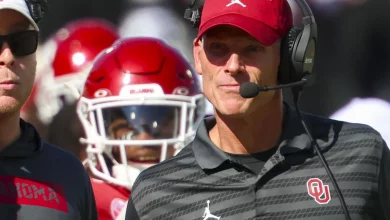Putting the true meaning of “super” back into the NHL version of the term “Superstar”

In the world of professional sports, the term “superstar” carries a weight of significance. A superstar is not just someone who excels at their craft, but someone who transcends the game, becoming a recognizable face globally, influencing the sport in unique ways, and setting standards that others aspire to meet. The National Hockey League (NHL), like many other leagues, has seen a shift in how the word “superstar” is used over the years. Traditionally, a superstar was someone who could turn the tide of a game, inspire crowds, and elevate the level of play around them. But with the rise of analytics, business-oriented decision-making, and the increasing commercialization of the sport, the term “superstar” has somewhat diluted.
To truly understand what it means to be a “superstar” in the NHL today, it’s essential to revisit the true essence of the word, the athletes who embody it, and how the current landscape of hockey shapes who gets recognized as a “superstar.” This article explores the meaning of superstardom in the modern NHL, how we define the term, and why some of the true “superstars” of the game may not always be recognized as such in the current media-driven era of hockey.
The Evolution of the Term “Superstar” in the NHL
Historically, the term superstar in the NHL was reserved for players who consistently dominated on the ice and were often the driving forces behind their teams’ success. Think of the greats like Wayne Gretzky, Mario Lemieux, Bobby Orr, and Gordie Howe—these players didn’t just perform at an elite level; they changed the game with their presence, creativity, and sheer dominance.
However, in today’s more commercialized and digitally-driven environment, the definition of an NHL superstar has expanded beyond pure on-ice performance. Marketing, social media presence, and overall brand building now play a significant role in determining who is considered a superstar in the modern NHL.
The Characteristics of a True Superstar
To understand how to put the “true meaning of super” back into the term “superstar,” it is important to first break down the characteristics of what truly makes an athlete a “superstar.”
1. Exceptional Talent
At its core, superstardom in any sport, including the NHL, is built on an athlete’s exceptional talent. Players like Wayne Gretzky or Sidney Crosby became superstars because their hockey IQ and skill set were unparalleled. Today, players like Connor McDavid, Auston Matthews, and Nathan MacKinnon continue to carry the torch of exceptional on-ice talent, showcasing skills that can shift the course of a game or series. McDavid’s speed, Matthews’ goal-scoring ability, and MacKinnon’s power make them not only among the best in the NHL today, but they also make them players whose performances are unforgettable.
In the context of the NHL, superstar talent is still rooted in the game’s fundamentals: skating, vision, hockey sense, and the ability to control the pace of the game. True superstars don’t just play hockey—they redefine the way it’s played. Every time McDavid touches the puck, for example, fans are on the edge of their seats, expecting something extraordinary. This level of anticipation and excitement is what separates a star from a superstar.
2. Impact on the Game
Being a true superstar in the NHL goes beyond individual talent. It’s about impact—whether on a single game, a series, or even a season. A true superstar is someone who changes the outcome of a game with a single moment of brilliance. A player like Sidney Crosby, for instance, has the uncanny ability to step up in crucial moments, turning the tide of a series or delivering when the stakes are highest. His impact in the 2016 Stanley Cup Finals, where he was a force on both ends of the ice, is a prime example of a true superstar’s ability to dominate at the right time.
A player’s ability to elevate their team and make those around them better is also part of what makes them a true superstar. Whether it’s setting up an iconic play, creating scoring opportunities for teammates, or leading a team to victory in the most critical situations, impact is one of the defining features of a true superstar. When a player consistently provides that level of performance, they are much more than just an elite talent—they become a force of nature on the ice.
3. Longevity and Consistency
While a flash-in-the-pan talent can have a great season or even a series of great seasons, true superstardom is only achieved through consistent performance over an extended period of time. The players who can maintain a high level of play year after year, regardless of injuries, changes in coaching, or external pressures, are the ones who cement their status as legends.
Alex Ovechkin is a prime example of this kind of player. The Washington Capitals’ captain has been scoring at a high level for nearly two decades and has broken numerous records along the way. His consistency and ability to perform year after year make him a true NHL superstar, even as he continues to chase Wayne Gretzky’s all-time goals record. Superstars don’t just have great seasons—they have decades of excellence that leave an imprint on the sport.
4. Cultural Influence
In today’s NHL, the “superstar” label extends beyond the ice. It’s also about cultural influence. A player who is recognized by fans not just for their on-ice performance but also for their personality, off-ice endeavors, and charitable work can become a cultural icon. A superstar transcends the game and becomes a figure who shapes the narrative of hockey.
Take PK Subban, for example. While his flashy style of play and larger-than-life personality have made him one of the most marketable figures in the NHL, it’s his charitable work and efforts to bring awareness to causes beyond hockey that have truly solidified his superstar status. Subban’s commitment to giving back to the community, including his historic donation to Montreal’s children’s hospital, is a testament to how a player’s influence can extend far beyond the rink.
Other players like Connor McDavid and Auston Matthews are still in the early stages of their cultural impact but have already begun to build their brands both on and off the ice. Whether it’s through endorsement deals, appearances, or speaking out on important issues, the best players understand that their influence can extend beyond the game, making them true superstars in every sense of the word.
Revisiting the True Meaning of “Super” in the NHL
As we look at the evolution of the NHL and the players who are considered superstars, it’s clear that the term “superstar” has changed somewhat over the years. In today’s world of analytics, social media, and branding, there are certain players who might be labeled as superstars simply because they have significant media coverage or large fan followings. However, the true essence of being a superstar in the NHL should still be rooted in talent, impact, longevity, and cultural influence.
1. Reaffirming the Importance of On-Ice Excellence
It’s important to remind fans and analysts alike that true superstars are defined by their exceptional on-ice play. This is the core of their superstardom. While branding and media presence are certainly important, they should never overshadow the incredible talent and dedication that make a player a superstar. Players like Connor McDavid, Sidney Crosby, and Patrick Kane have earned their superstar status through years of consistently great performances that have elevated the level of hockey for everyone around them.
2. Recognizing and Celebrating Longevity
As the NHL moves into a new era, it’s important that we continue to celebrate players who not only shine bright for a few seasons but maintain their level of excellence over the long haul. Superstars like Alex Ovechkin, Crosby, and Zdeno Chara have defined careers that span well over a decade, and they deserve to be celebrated for their sustained contributions to the game.
3. Acknowledging Off-Ice Contributions
While on-ice success should always be the primary measure of superstardom, the ability to influence culture off the ice is also an important component of modern superstardom. NHL players should be recognized for the impact they have in their communities, through charity work, and as role models for younger generations. PK Subban, Wayne Gretzky, and Sidney Crosby are prime examples of athletes who understood their responsibility to impact the world outside the rink, and that makes them even more influential than their already impressive on-ice careers.









